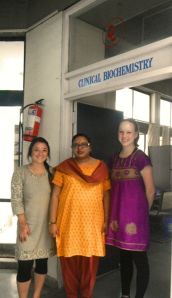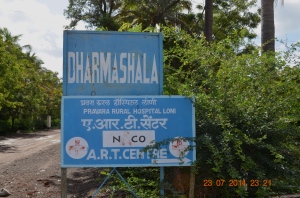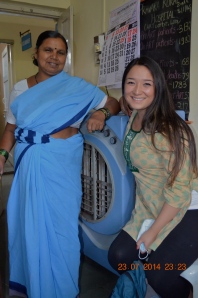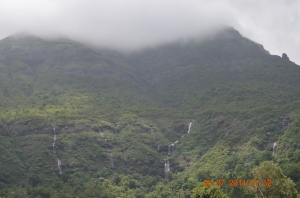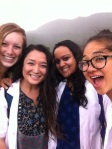Our fifth week here in Loni consisted of labs, the ART (Anti Retroviral Therapy) department and another Friday SHAPE program. On Monday and Tuesday we were posted in three different lab departments.
We spent the morning in the biochemistry lab, the afternoon in the pathology lab and after lunch we observed what was being done in the microbiology lab. In biochemistry we were given an introduction to what all is done throughout the central lab. As you walk in there is a register in which the patient first checks in. Attached to the check in counter in the back is a room where blood is drawn and a patient number is given. This number will be attached to everything affiliated with the process of the blood sample from using the centrifuge to separate the blood to the blood smears. After the number is assigned the blood sample is sent to the necessary department. In the biochemistry lab we observed the lab technicians using the centrifuge and the processes of separating the serum from the blood making the sample more effective for testing and related purposes. Each lab technician had certain tools that would extract exactly the amount needed for each sample making less room for error.
Later in the morning we made our way to the pathology lab where we watched the lab technicians taking blood samples and creating slides. First the serum sample was placed on the slide and with a skillful swipe a smear was made across the glass in the shape of a thumb. From there the slide was taken to the sink and crystal violet dye was applied to stain the slides. After waiting for the dye to set the slide was given a wash, dried and taken to be mounted. The lab technician then placed glue one the slide, applied a cover and the preparation of the slide was completed. We then proceeded to work with microscopes and differentiating between red blood cells (erythrocytes), and the different kinds of white blood cells (leukocytes). The white blood cells have five different types each with their own function: neutrophils, monocytes, lymphocytes, eosinophils and basophils. All a general refresher of microbiology lab back home. We worked with the microscopes ourselves identifying each type, as well as watching the lab technicians while they counted how many of each were found taking a count out of 100 cells. This number of white blood cells counted could give an accurate depiction if something was off in the blood count, confirming that an illness or disease is present.
After taking lunch we met back at the lab and observed what is done in the microbiology department. After a brief overview of the department we went to another section of the hospital where practical classes were held. There we saw culture growth on blood agar plates of bacteria such as vibrio cholera. We later made our way to the microbiology museum where we saw preserved samples of bacteria, viruses, fungus and worms. We were also able to view slides of malaria, tapeworms and staphylococcus.
On Wednesday and Thursday we were posted in the ART department. This department is for patients who suffer from HIV/AIDS and other complications and diseases that follow caused by the suppressed immune system caused by the HIV/AIDS. We watched the medical interns as they saw each patient checking their medical records and prescribing the anti-retroviral medication. We were told the patients must come in once a month to receive their medication and update on the status of the disease and the progression of their symptoms. This was the first time I had been around and HIV/AIDS patients in a hospital setting and it was interesting to see all who were affected. The interns told us that they see around 30-40 patients a day which I thought was a surprisingly high number.
On Friday we joined the two interns from Drake University, Leonard and Rachel to participate in the SHAPE program in Bhandardara. We drove two hours, into the mountains to village in one of the most beautiful places we have been to so far. The green and mountainous landscape was gorgeous with waterfalls flowing from the side of the mountains in the distance. The program was conducted as is had been before when we observed the SHAPE program in the previous weeks. There were two nursing students, two dental students and one physiotherapy student. We sat in the classrooms as the interns explained proper care for your health to the children in Marathi (the local language). It was cute to see the children’s responses to us while we were there, lots of giggles and pointing.

